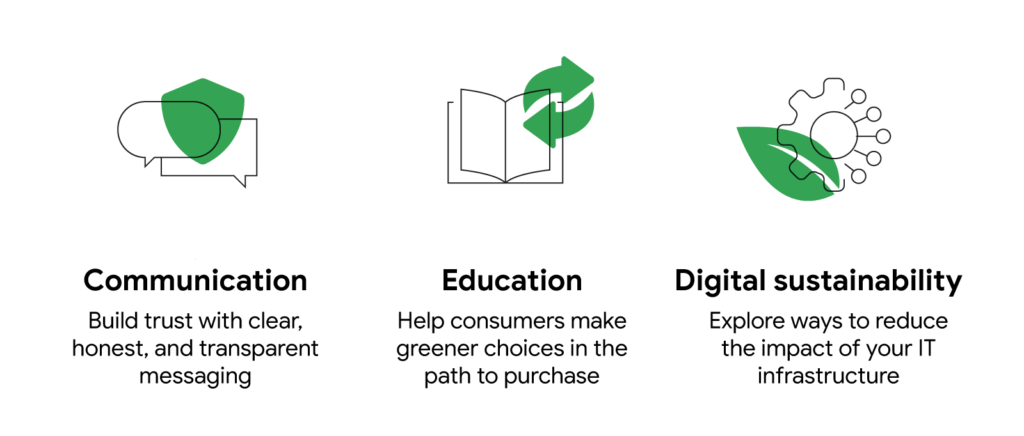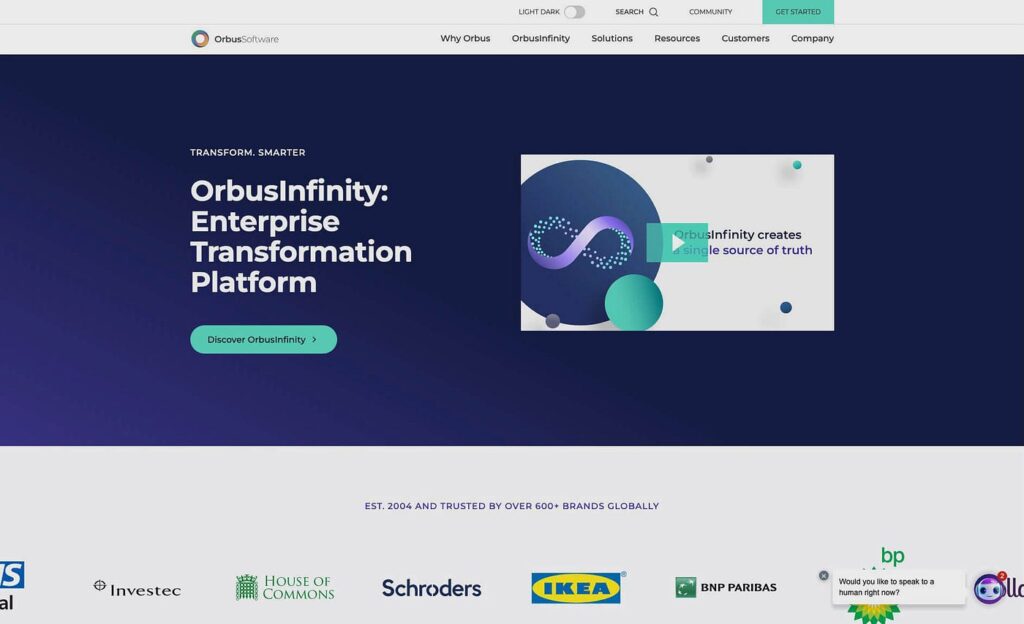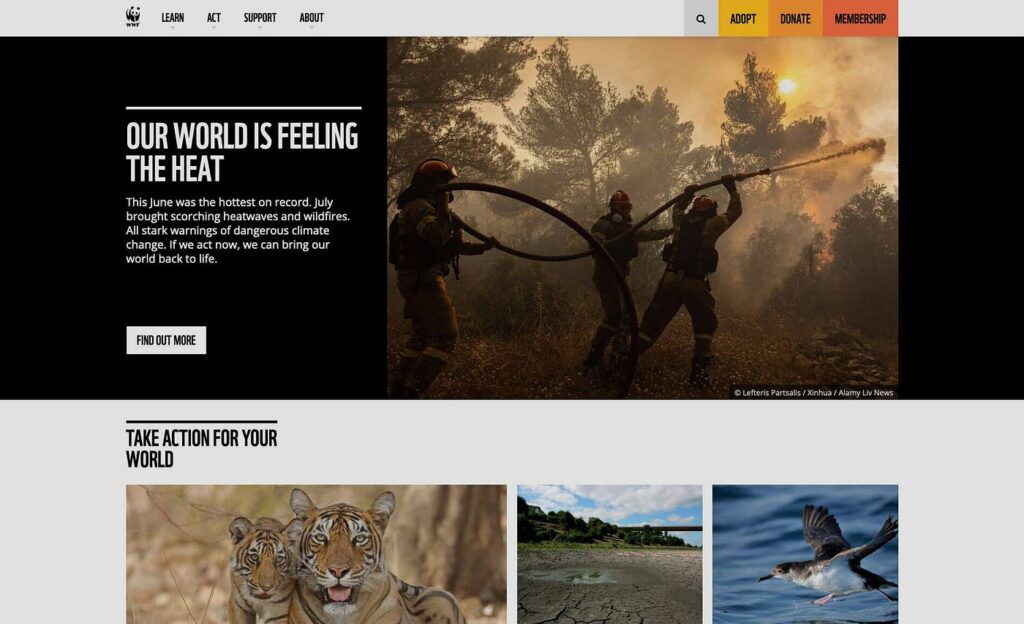10 Sustainable Web Design Trends Reshaping 2024
The internet is rapidly expanding. As consumers gain a growing appetite for digital experiences, the online carbon footprint has skyrocketed.
As traditional web design practices neglect ecological considerations, it’s no surprise that traffic-flooded servers, heaps of video content and masses of design code all contribute to resource waste and excessive energy consumption.

“The internet, email, and cloud-based services have reduced physical resources like paper. But the carbon emissions produced from manufacturing, powering, and cooling computers, smartphones, and data centres can add up. The greening of the internet is the next endeavour in our hyperconnected era,” say experts at Climate Impact Org.
However, as we enter the new year, 2024 web design trends are tipped to take a sustainable turn. As online brand giants and UX experts promise to take a green approach to their design strategy, we are heading towards a future of interrogating thoughtful design with eco-conscious practices.
From simplifying scripting and committing to green servers to swapping bold hues for muted colour palettes, let’s look closely at some sustainable web design trends predicted to dominate in 2024.
Table of Contents
Why Has Web Design Gone Green?
Did you know that the internet is believed to produce a staggering 3.7% of carbon emissions alone?
In an online world dominated by content-hungry consumers, it’s no surprise that websites with exciting visuals and personalised experiences contribute to the digital sphere’s carbon footprint.
“The internet currently produces approximately 3.7% of global carbon emissions, which are rising in line with our hunger to consume more data,” say experts at Sustainable Web Design. “Increasingly, web technologies are also being used for sowing discontent, eroding privacy, prompting unethical decisions, and, in some countries, undermining personal freedoms and the well-being of society.”
However, on the back of COP26’s push for a global net zero by 2050, we see consumer attitudes towards eco-conscious practices begging to change.
In a value-driven online community, brands investing in sustainable practices in 2024 could have a competitive edge in a crowded digital market.
With this in mind, we’ve revealed the top three reasons online brands are going green in 2024.
Traditional Web Design’s Environmental Impact
So why does web design pose such a threat to the environment?
The problem is traditional design practices have been known to prioritise aesthetics over sustainable functionality. While adding existing visuals, embedded video content, and reels of script code to your website may boost consumer traffic, these UX design methods have significant environmental impacts.
Some of these include the excessive use of resources provided by the server, unnecessary data transfers, inefficient coding structures and even a lack of consideration for accessible design.
Put simply, the powering and cooling of our devices drain energy from our local grids, while hardware production and shipping skyrocket the digital carbon footprint.

As you can see, a whopping half of digital-based emissions come from consumer device use, while another fifth comes from hardware production.
While traditional practices have become favourable for mass targeting and personalised perfection, their inefficient energy production drives the UX world towards a greener future.
A New Era Of Green Consumers
It’s no secret that today’s consumers are value-driven. In fact, over half of consumers in 2023 revealed that they would only interact with a brand that aligned with their values.
With 9 in 10 value-driven consumers claiming that sustainability is at the top of their list when choosing the right brand, businesses that fail to address environmental malpractice could be at risk.
This includes opting for transparent manufacturing, local sourcing, ethical working standards and even their digital footprint.
“Companies that don’t consider these factors could end up losing business. Evidence suggests that some consumers are boycotting brands that aren’t perceived as ethically conscious,” says Dr Pascal Stiefenhofer, Senior Lecturer at Newcastle University. “This is important on two levels. Firstly, it means that some products are unlikely to sell as well as companies had hoped. More importantly, companies that aren’t viewed as ethically conscious could see their entire brand tarnished. In this age of social media, where information and misinformation can spread like wildfire, it won’t take long for a brand to be tainted beyond repair.”
However, brands embracing sustainability within their strategy could gain a competitive edge amongst younger, value-driven consumers by incorporating user-centric design into their practices.
The Power of Sustainable Marketing
Brands that embrace the power of showcasing sustainability within their marketing and design strategy could also gain a competitive online advantage.
If your web design demonstrates your commitment to a greener future, you’ll be more likely to see value-driven consumers jump on board.
Sustainability is a topic that can help enhance brand storytelling, design choices and even your content strategy.
Navigating The Core Principles of Sustainable Web Design
For UX designers looking to get ahead in 2024, it’s time to jump into the core principles of sustainable web design.
These are communication, education and design sustainability. Your brand’s web design should be energy-efficient to promote an eco-friendly online footprint. Your content should be transparent and ethical, encouraging consumers to make greener choices.

Here are some of the critical things to consider when embarking on a sustainable web design journey:
- Resource Optimisation: Can you reduce your file sizes and compress your images? Smaller strings of code make it easier for your server to load your content, decreasing energy consumption.
- Accessibility and Usability: Ensure that your UX design is easy to navigate for all users of all abilities. This will ensure a faster loading time and reduce screen time.
- Customisable Design: Does your site design allow users to opt-in to energy-saving settings, such as low-light browsing and minimalistic navigation?
- Efficient Energy Use: Can you lower your tech's energy consumption? This includes updating your software regularly instead of buying new devices, implementing efficient caching strategies and optimising your design process.
- Green Hosting: Are you using a sustainable web host? Choose hosting providers that prioritise using renewable energy sources and are familiar with eco-friendly data centre practices.
10 Sustainable Web Design Trends For The New Year
With sustainable web design principles in mind, it’s time to examine some eco-friendly trends tipped to dominate the green UX wave in 2024.
“As we approach 2024, the digital landscape presents an exhilarating yet challenging frontier for web developers and digital agencies. We live in an era where technology evolves lightning, and user expectations shift just as quickly. Staying abreast of the latest trends and principles in web development is not just advantageous – it’s imperative,” says Stuart Watkins, CEO of design firm Devstars.
“The coming year will unfold new horizons in how we approach web design, prioritise user experience, and leverage technology. This evolution is not just about keeping pace with tech. It’s about setting the stage for innovative, user-focused, and sustainable digital experiences.”
Here are ten web design trends ready to blow up in 2024.
1 – Darker Colour Palettes
The first trend we've seen take off in the web design industry is the use of darker, muted tones within the site’s colour palette.
As designers strive to save the energy generated from on-screen illumination, they turn to low-carbon colour palettes. These are colours that are duller in tone, making them easier to see in lower screen lights.
Colours like black, dark green and red are set to become more common as they have the most energy-efficient pixel makeup.
This trend follows the success of recent mobile updates such as ‘night mode’, which dims the screen to adapt to a darker environment. After Google saw its display’s power usage fall by 63% in Nightmare, compared to full-screen illumination, going dark with your design has become the newest green UX trend.

As you can see in this example from Orbus Software, darker blues and muted grey enhance the low-light browsing experience. Making it far more comfortable for users to engage in low light reduces screen-based energy consumption.
2 – Streamlined Coding and Scripting
Another trend likely to gain more traction in 2024 is efficient coding and scripting practice. When long code lengths follow webpages, it can take the server twice as long to load up the content. This puts pressure on your resources and consumes more energy in the process.
Did you know the average web page produces more than 1.76g of CO2 per page view? This number can be tripped if image files are more extensive and servers are lagging.
The key here is to streamline your coding and scripting. While this task can be lengthy, taking care of new content-coding is excellent practice for a sustainable future.
One way to improve this process is to conduct a green coding audit. These identify areas of waste and inefficiency when it comes to your coding. This makes it easier than ever to clear out your code cache!
“Green coding audits, also known as eco-friendly or sustainable coding, feel like they will become ever more important. This is the practice of reviewing and optimising the environmental impact of software development and website design,” says Matt Cotton, Lead BA at Answer Digital.
“With the rise of concerns about climate change and the increasing energy consumption of the tech industry, more and more companies are looking for ways to reduce their carbon footprint and operate more sustainably. Why? Because their customers will demand it. Green coding audits are one way to achieve this goal by identifying and addressing areas where software development can be more energy-efficient and less resource-intensive.”
3 – Energy Saving Image Optimisation
2024 will likely be when more brands swap high-resolution images for a lo-fi alternative.
SVG-type illustrations look cool, but these halftone image styles save energy. They contain fewer pixels than a high-resolution image and a smaller file size, so they are great to add to your sustainable website.

In 2024, seeing these ‘grainy’ images on your favourite website won't be uncommon as the ultimate energy-saving UX move.
Speaking of image optimisation, we’re also likely to see traditional raster and photographic pictures relaced with vector-type illustrations in the coming year. Not only are these likely to have less code attached, but they replace high-resolution energy-hungry images that could be slowing down a site’s server.
4 – Updating Typefaces
Did you know that your choice of font can also affect the energy consumption of your website? A single font weight can add up to 250kb to your site alone, so it's important to remember a few points!
In 2024, more UX designers will likely update their typefaces to create a greener website design.
There are a few ways to do this:
- Minimising The Variations of Your Font: This will help tie up your branding and promote site consistency, and it’s also easier for your server to scan through identical typefaces and sizes.
- Using Pre-Installed Fonts: If you prioritise using pre-installed fonts on your devices, you’ll save time and energy loading additional files.
- Using Hosted Fonts: Using fonts from an online host such as Google makes accessing the same file easier for your website. This reduces the need to burn through energy by uploading multiple versions.
While updating your typeface may not change the appearance of your website dramatically, you’ll quickly see your digital carbon footprint shrink. Look out for websites using pre-installed fonts in 2024, as this trend will likely be big amongst eco-conscious designers.
5 – Embracing Mobile First Design
Could mobile design trends also influence green strategies in 2024? The answer is yes. With the ability to discourage users from loading up large amounts of content on a desktop, smaller-screen browsing can help reduce design time, limit the size of loadable assets, and be easily viewed in energy-saving modes such as ‘night mode’.
“Embracing a mobile-first design approach holds significant potential for enhancing online sustainability. By starting the design process from small screens and gradually scaling up, the focus shifts to elements that work efficiently within limited space,” say UX design experts at Ronins.
“Following Luke Wroblewski’s advice, mobile-first design compels us to prioritise essential content and actions before expanding to larger screens.” They state.
With over 64% of online searches now coming from a mobile device, it’s no surprise that more UX designers prioritise small-screen design. Better still, as we embrace new forms of content delivery such as ‘voice search, ‘ energy saving becomes even more efficient, as individual content does not need to be loaded to respond to a search query.
6 – Opt-In Sustainable Toggles
Opting into sustainable design will also generate some movement in 2024. As the internet opens to more eco-conscious consumers, brands are more likely to design features that speak to their values.
The opt-in toggle is just one of them. These energy-saving switches can be viewed and interacted with when entering a web landing page, allowing viewers to reduce their digital carbon footprint by browsing the content in energy-saving mode.
This consists of a dimmer screen, muted tones and less hi-resolution imagery. In other words, it is a simplified yet fully functional version of their website.

BooHoo is a pioneer in the energy-saving toggle trend, claiming that it aims to remove unnecessary imagery that slows down the website for a faster, optimised browsing experience.
“We’ve introduced a new switch on site; with just one click, you can reduce the energy used by the site or app,” says BooHoo CEO John Lyttle.
“Whether you’re on-site or app, just flip the switch! On-site, we'll dim the screen throughout and remove images for a lighter, faster experience. You will always enable dark mode on the app, use images with smaller file sizes and disable certain app features!”
Next time you see a sustainable opt-in toggle, why not click it and see how easy it is to display your site in energy-saving mode?
7 – Green Hosting
Did you know storing your site files on a physical server continuously consumes energy?
In 2024, we’re likely to see more web designers choose to host their sites on a green server. The chosen hosting provider prioritises renewable energy sources and a data centre that is much closer to the website's core audience. This minimises the distance data has to travel, in turn reducing energy consumption.

WWF is just one company that proudly hosts its website on a server powered by renewable energy. Their specific green hosting plan relies on Vue.js, which aims to reduce the memory footprint and CPU used by the site.
Investing in a VPS server is also becoming popular among those using a shared hosting plan. Virtual Private Servers are scalable, leasing only resources that you need. Better still, VPS servers are also shut away from noisy neighbours that could drain your resources at a fraction of the cost of private hosting.
8 – Minimalistic UX Design
Minimalistic design is also making a comeback in 2024. Not only is a minimalistic design aesthetic, but it can also save your website a lot of energy. Reducing the amount of files on your landing page alone is a great way to speed up loading times and improve your digital footprint.
Better still, those who reduce the amount of elements within their UX design strategy are likely to see a positive user expense payoff. Not only is a minimalistic design more manageable to navigate but decluttering your design can help your brand appear more professional.

Apple is the king of minimalism, so it’s no surprise they are leading these UX trends forward. Optimising their use of whitespace for a streamlined browsing experience, their site is both aesthetic and carbon-friendly.
9 – Replacing Images With Typography
Did you know that images make up a whopping 21% of the total weight of a web page?
When we click on our favourite websites, we are often greeted with a large, visually enthralling banner that grabs our attention and gets us to stick around.
What if we replaced these ‘hero’ images with typography? This trend is gaining traction in 2024 as more UX designers swap banner images for banner text. These oversized slaps of interesting font usage grab our eyes and call us to action in just a few words.
Better still, this clever use of ‘hero’ typography reduces the damage of energy-hungry images while contributing to a more contemporary web design.

Look at this example from Runway. Opting for a bold statement in a simple yet powerful font instantly draws you to the site.
Also, look out for familiar typography to make a comeback this year. We’re seeing more frequent use of old-school favourites such as trusty Times New Roman and Helvetica, as they are already installed on every user's device for an energy-efficient loading process.
10 – Energy Efficient Content Delivery
Lastly, let’s look closer at your content delivery network. In 2024, more websites than ever before are tipped to invest in an efficient CDN to improve their website performance.
Content delivery networks boost site performance by reducing the amount of distance content data has to travel. Delivering content straight from a server to a user enables faster load times and contributes to lower energy consumption.
“A CDN is a collection of geographically distributed caches intended to enhance the performance of Internet video services and are forecasted to deliver around 67% of all Internet video traffic,” says Georgios Paschos, Director of Research Science at Amazon. “CDNs are in charge of strategically distributing video content over the network to ensure content availability and reduce video delivery delay.”
As video content becomes a trending demand from TikTok-loving consumers, 2024 will call for more sites than ever before to prioritise a powerful CDN for sustainable success.
What’s Next?
As we jump into the next phase of UX design, sustainable trends will continue to drive the industry forward.
As online brand giants such as BooHoo and Apple lead the way forward in popularising eco-conscious design, it won’t be long before sustainable toggles, green hosting, and energy-efficient content delivery become the new normal.
